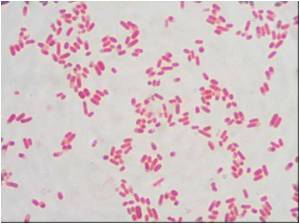According to World Health Organization (WHO), each year, unsafe food practices is the leading cause of over two million deaths, including 700,000 children, in the South-East Asia Region.

Dr. Poonam Khetrapal Singh, Regional Director, WHO, South-East Asia Region, said, “The saying that ‘we are what we eat’ is absolutely apt and sums up the importance of safe food in human health. Safe food is needed for everybody, from growing children and adolescents to pregnant women and older adults. Let us work together to make our food safe to contribute to better health of people, since safe food promotes healthy lives.”
WHO has asked people to post an image of a plate of food they consume on their respective Facebook pages, explaining in one sentence how they would ensure food safety. Participants also need to nominate five of their friends by tagging them using #safefood.
The awareness campaign has already gone viral with scores of pictures being posted from different parts of the world. The safe food practices have assumed a ‘cool quotient’ among people who are taking pride in showing off their culinary skills. People are also following WHO’s five key tips to keep food safe in the kitchen.
The safety tips include clean hands, usage of safe water and raw materials, keeping surfaces clean while preparing food, cooking thoroughly, separating cooked and raw food, and storing food at correct temperature.
Sangeeta Jasmine, a student at the University of Delhi, posted a picture of her dinner comprising of steamed rice, carrot sambar, beetroot poriyal and dhal. She said her ‘food is healthy as it is cooked thoroughly and served hot’.
Another participant, Jyotsna Srivastava, also from the capital city, posted a picture of chole bhature. She announced that she used fresh ingredients, clean water, cooked in hygienic conditions and served it hot. The participants also challenged their five more friends to do the same.
In a bid to create awareness on healthy eating habits, WHO’s Vietnam head office organized a food fair. Officials distributed country’s signature dish, Vietnamese beef noodle soup or Pho. They posted pictures of preparation of Pho and also of visitors enjoying their bowls of hot beef Pho at the fair on Facebook with comments on food safety.
Officials claimed that chefs used separate equipment and utensils such as knives and cutting boards for handling raw food. Also, the meat is cooked thoroughly and the dish is served hot.
Meanwhile, WHO was also educating people by posting food safety facts and tips and infographics. In one such post, WHO mentioned Salmonella infection, a common bacterial disease that affects the intestinal tract.
The infection is caused by eating contaminated food or by touching animals carrying the Salmonella bacteria. There are over 85,000 Salmonella cases every year in the European Union alone. WHO also made suggestions to public and policy makers to fight against Salmonella infection.
What Food Handlers and Consumers Should Do?
- Use only fresh, clean, uncracked eggs
- Wash hands, surfaces and equipments before and after contact with eggs
- Keep eggs refrigerated
- Cook eggs thoroughly
- Avoid leaving cooked eggs at room temperature for more than two hours
- Use pasteurized eggs (a process of partial sterilization, especially one involving heat treatment or irradiation) when preparing foods that will not be cooked further such as mayonnaise
What Policy Makers Should Do?
- Address food safety risks along the entire food chain
- Promote collaboration between the health, veterinary and agriculture sector
- Encourage Salmonella control program in poultry production and set targets
- Work with the food industry to ensure compliance with food safety measures
Answer: Yes. Infection from contaminated food can lead to death. Food contaminated with virus, bacteria and chemicals causes more than 200 diseases including cancer.
Question 2: If food looks good and smells good, is it safe to eat?
Answer: No. Do not determine whether the food is good or bad with its smell, taste and appearance. Some dangerous micro-organisms do not change the appearance of the food. Also, some other micro-organisms can make food to smell bad, taste horrible but will not cause any disease.
Answer: Yes, some micro-organisms are essential to make cheese, yogurts, fermented meat and vegetables.
Question 4: What is the proper temperature for a home refrigerator?
Answer: Below 5°C. The growth of micro-organisms can be slowed down or stopped by holding temperatures below 5°C.
Question 5: Can keeping raw and cooked food separate prevent cross-contamination?
Answer: Yes, it can. This prevents the transfer of microorganisms. Raw food, especially meat, contains dangerous microorganisms.














